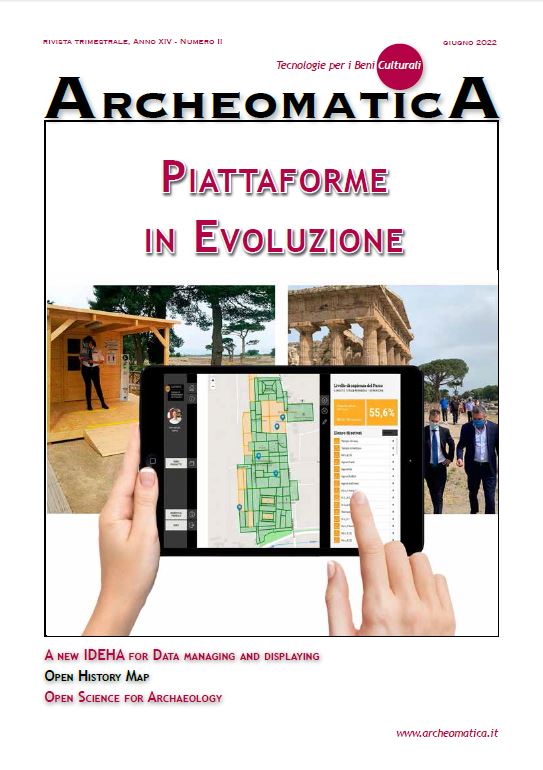Open History Map – Status of the Project
Abstract
Open History Map, an open map of the past that was already presented as a
concept a few years ago, is now in its first year of functioning infrastructure
and collects around 150GB of data from around 90 sources. The platform is
open in all of its aspects and enables research groups to create new importers
for their own open datasets. In addition to that, OHM enables the visualization
of "ephemeral" datasets, i.e. representation of vicinity for historical
characters and vehicles, battles and events. The present work will analyze
the status of the project and the contributions it is doing to the general DH
and PH sector, specifically on source quality management and general cloud
first architectures.
OHM is based on the collection of open datasets available online. The geographic
precision as well as the informational quality varies a lot between
sources, research teams, projects. These factors higlight the need of a tool
to manage the data quality, which we called OHM Open Data Index, (https://
index.openhistorymap.org) where we collect all sources we find and all datasets
we import in order to analyze and display the general quality and/or
lack of data.
The complexity of the infrastructure behind a project such as Open History
Map required an original and cloud-first approach, enabling the optimization
of every single aspect of the development as well as the deployment and the
usage of the system. For this reason a cloud-first approach was used, trying
to harness all the features of the most common FLOS software platforms in
order to maximize the quality of the final product.
Riferimenti bibliografici
Bernardoni, Silvia, M. Montanari, & R. Trojanis. «Open History Map». Archeologia e Calcolatori n. XXVIII.2 - 2017. Edizioni All’Insegna del Giglio, 20172-01-01. https://doi.org/10.19282/AC.28.2.2017.44.
Montanari M., Raffaele Trojanis, Silvia Bernardoni, & Luca Tepedino. «Open history map - a new approach to open access for archaeology and cultural heritage». In 2015 Digital Heritage, 2:479–80, 2015.
https://doi.org/10.1109/DigitalHeritage.2015.7419557.
Zundert, J. «If You Build It, Will We Come? Large Scale Digital Infrastructures as a Dead End for Digital Humanities». Historical Social Research / Historische Sozialforschung 37, n. 3 (141) (2012): 165–86.
Akoka J., Isabelle Comyn-Wattiau, Stéphane Lamassé, & Cédric Du Mouza. ‘Conceptual Modeling of Prosopographic Databases Integrating Quality Dimensions’. Journal of Data Mining & Digital Humanities Special Issue on Data Science... (7 May 2021): 5078. https://doi.org/10.46298/jdmdh.5078.
Franke M., Ralph Barczok, Steffen Koch, & Dorothea Weltecke. ‘Confidence as First-Class Attribute in Digital Humanities Data’. In Workshop on Visualization for the Digital Humanities (VIS4DH), 2019.
Knight, S.. ‘Developing a Framework for Assessing Information Quality on the World Wide Web’, n.d., 14. Naumann F., & Claudia R. ‘Assessment Methods for Information Quality
Criteria’, 27 October 2000.
Therón S., Roberto, Alejandro Benito Santos, Rodrigo Santamaría Vicente, & Antonio Losada Gómez. ‘Towards an Uncertainty-Aware Visualization in the Digital Humanities’. Informatics 6, no. 3 (September 2019): 31.
https://doi.org/10.3390/informatics6030031.
Martin, Robert C. Clean Architecture : A Craftsman’s Guide to Software Structure and Design. 1° edition. London, England: Addison-Wesley, 2017.
Dowloads
Pubblicato
Fascicolo
Sezione
Licenza
Gli autori che pubblicano su questa rivista accettano le seguenti condizioni:- Gli autori mantengono i diritti sulla loro opera e cedono alla rivista il diritto di prima pubblicazione dell'opera, contemporaneamente licenziata sotto una Licenza Creative Commons - Attribuzione che permette ad altri di condividere l'opera indicando la paternità intellettuale e la prima pubblicazione su questa rivista.
- Gli autori possono aderire ad altri accordi di licenza non esclusiva per la distribuzione della versione dell'opera pubblicata (es. depositarla in un archivio istituzionale o pubblicarla in una monografia), a patto di indicare che la prima pubblicazione è avvenuta su questa rivista.
- Gli autori possono diffondere la loro opera online (es. in repository istituzionali o nel loro sito web) prima e durante il processo di submission, poiché può portare a scambi produttivi e aumentare le citazioni dell'opera pubblicata (Vedi The Effect of Open Access).





